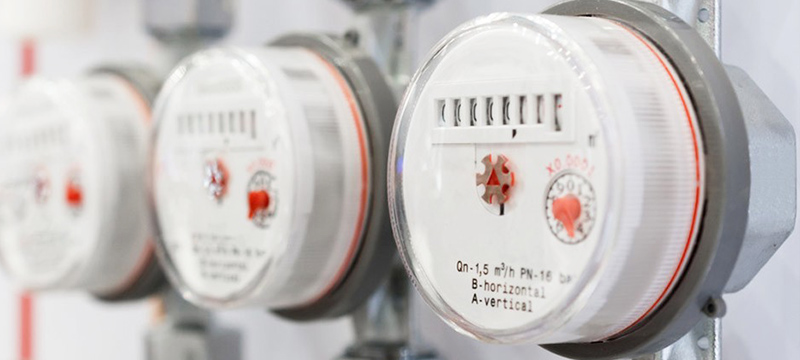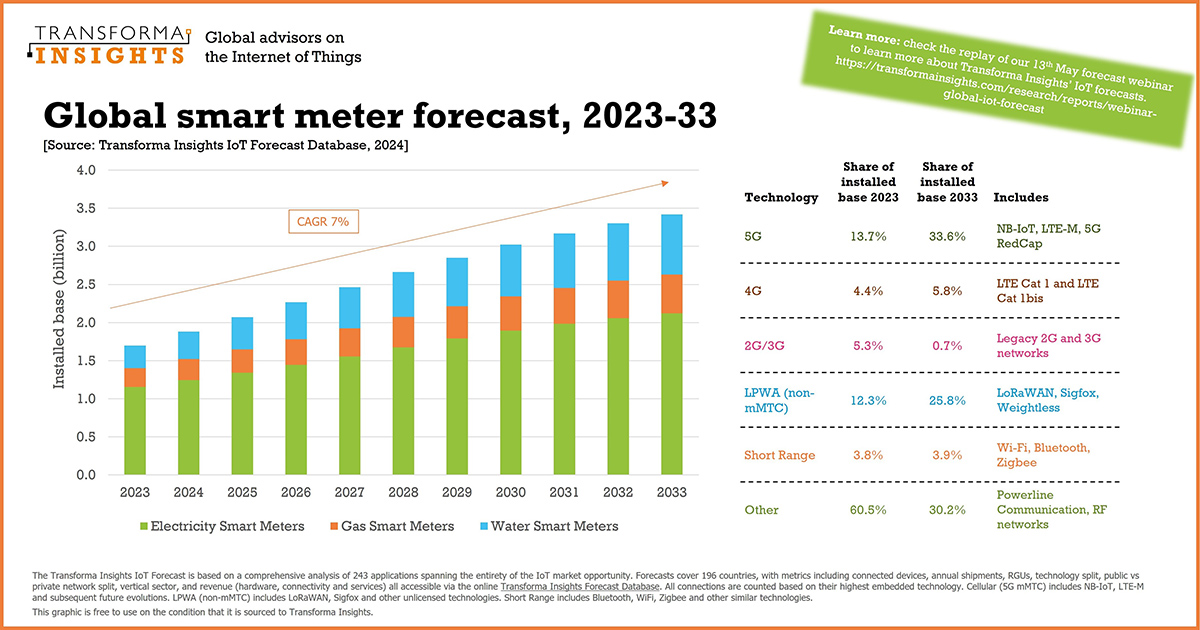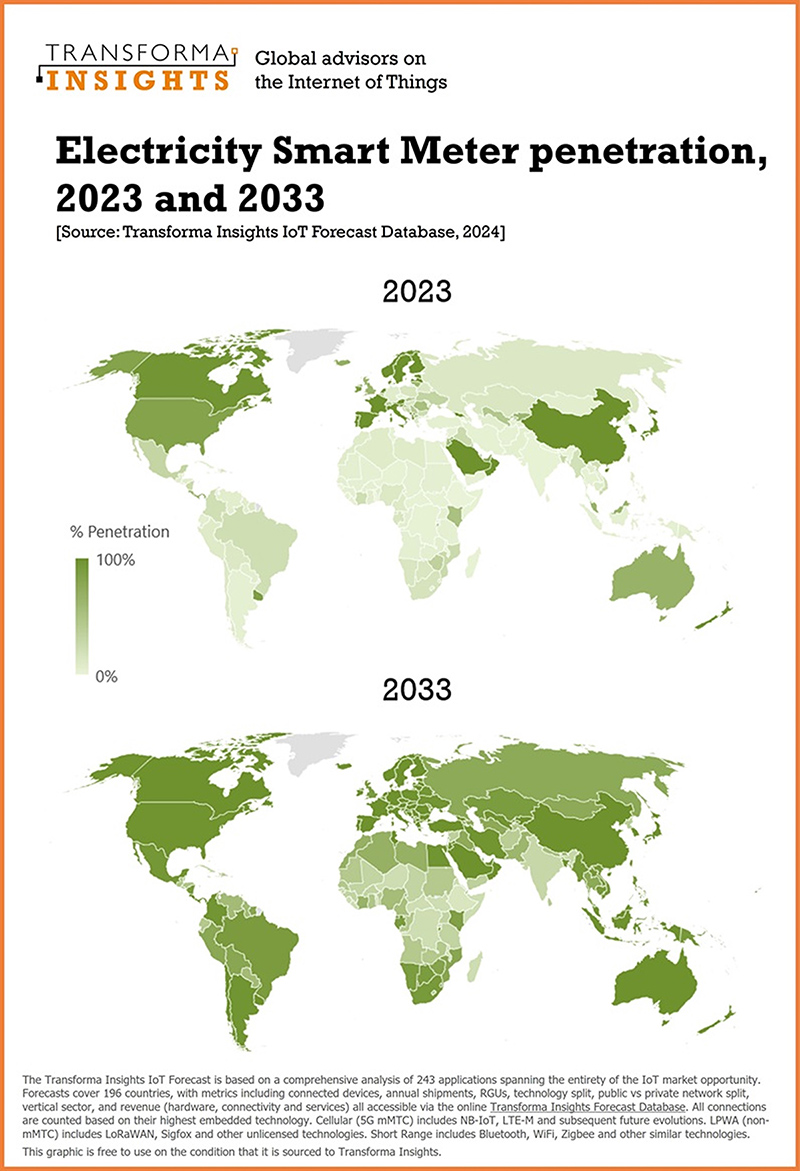

The world’s leading IoT analyst firm, Transforma Insights, estimates that global smart meters will grow from 1.7 billion in 2023 to 3.4 billion in 2033, by which time smart metering will generate revenue of USD40 billion annually. Smart electricity metering will continue to dominate but with smart water metering increasingly important.
This week Transforma Insights has published a series of reports on the markets for smart water, gas, and electricity metering as part of its ongoing IoT market forecasts.
The research demonstrates that smart metering will continue to be one of the most significant IoT use cases.
The key highlights are:
- The total number of smart meters globally will double over the next decade, from 1.7 billion at the end of 2023 to 3.4 billion at the end of 2033. Today, over 10% of all Internet of Things connections globally are smart meters. By 2033, with the more rapid growth of other use cases that proportion will have declined slightly to 9%.
- Electricity smart meters dominate today, with 1.15 billion connections (68%), compared to 245 million gas smart meters (14%) and 296 million water smart meters (17%) at the end of 2023. By 2033, the equivalent figures will be 2.1 billion (62%), 510 million (15%) and 789 million (23%).
- The total revenue set to be generated by smart metering globally was USD17 billion in 2023, a figure which will grow to USD40 billion in 2033.
- The technologies of choice for connecting smart meters will evolve quite rapidly. Today there are a diverse array of technologies used to connect electricity meters including powerline communications and RF mesh. Over time this will gradually migrate towards the use of Low Power Wide Area (LPWA) technologies, both cellular mMTC technologies (e.g. NB-IoT) and unlicensed technologies such as LoRaWAN and Sigfox.

Smart electricity metering
Electricity dominates the smart metering space throughout the forecast period, accounting for over 60% of all meters. Of the 1.15 billion electricity smart meters today, 1 billion (89%) are residential, a figure which equates to a penetration of 48% of households globally. A lot of countries have ostensibly completed their smart meter deployments, notably many countries in the EU, and China. In other regions there is still much to be done. By 2033, the projected 1.9 billion residential smart meters will equate to a global household penetration of 81%, as illustrated in the graphic below.

Smart gas metering
Smart gas metering is restricted to countries where Piped Natural Gas (PNG) is used, most prominently in Europe. There were 246 million gas meters in 2023 of which 95% were residential and the remaining 5% were for commercial premises. Around 44% of gas households have smart meters today, a figure which is expected to rise to 72% in 2033. Without access to mains power, gas smart metering tends to favour using Low Power Wide Area (LPWA) technologies such as NB-IoT and LoRaWAN.
Smart water metering
Water smart meters rollouts have been patchy due to varying levels of governmental focus, although increasing pressure on water resources mean that smart water metering numbers will grow faster than either electricity or gas over the period, growing at a CAGR of 10% compared to a blended average of 7% across all utilities. As will gas smart metering, water will also favour LPWA technologies.
The post Global smart meters to double to 3.4B by 2033, generating USD 40B in annual revenue appeared first on IoT Business News.










